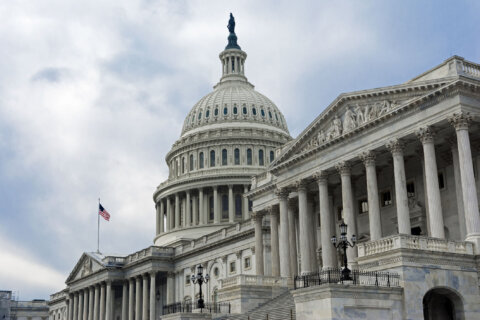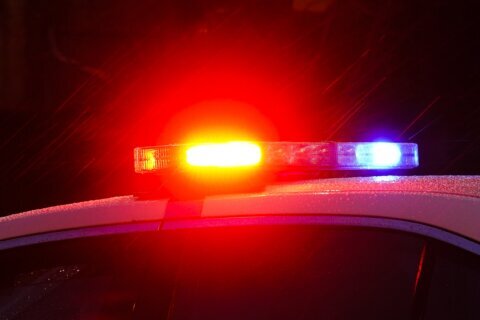This article was republished with permission from WTOP’s news partners at Maryland Matters. Sign up for Maryland Matters’ free email subscription today.
The number of blue crabs in the Chesapeake Bay is down slightly from last year, to 317 million, but researchers said the numbers are manageable and they see “no serious reason for concern.”
The population estimates come from the annual winter dredge survey released last month by the Maryland Department of Natural Resources and the Virginia Institute of Marine Science. It estimated that the overall number of crabs this year is down from the 323 million estimated in 2023.
The decrease was due to a drop in the number of adult crabs, which fell from 207 million in 2023 to 179 million this year. But adult populations are still within a range researchers consider safe.
Although the population of juvenile crabs continued to rise in recent years, it still remains below average.
Romuald Lipcius, a VIMS researcher who helped conduct the survey, pointed to the juvenile and female crab populations as points of focus.
“The number that we saw this year for the females was just below the average … it’s remaining at what I would consider to be at an average level,” said Lipscius, who is also a professor of marine biology at William and Mary University. “Not the safest level, but it’s no serious reason for concern.
Both female and juvenile crab numbers set off a “red flag” in 2022, said Allison Colden, executive director of the Chesapeake Bay Foundation. Although fluctuations in the population are normal, she said recent years have been concerning.
“Over the past few years, that trend, particularly in the juveniles, has remained low. We’re not seeing a spike like we would see typically where it goes up and down,” Colden said.
Colden and others pointed to possible causes for the overall low population numbers, all of which have been caused by humans. Those include pollution and invasive species like blue catfish, which were introduced to the Bay in the 1970s and ’80s for recreational fishing.
“In the James River … blue catfish were consuming on the order of 2 million blue crabs per year,” Colden said. “We know there are tons of catfish out there, and we know that they’re eating blue crabs, so there has to be some sort of impact.”
Mike Glasco, who runs a crabbing charter under the name Captain Puddin’, explained that chemical runoff plays a role in the blue crab population decrease as well.
“What they’re spraying in the fields is where you start the runoff in the bay. Pollution,” Glasco said.
“Three years ago, had a lot of crabs because they were hiding in the grass,” Glasco said. “That spring, after they sprayed the field, we had a lot of rain. Next thing you know, you see the grass floating and the crabs didn’t have anywhere to hide.”
Despite the overall population decrease, Frank Tuma – a commercial crabber who works north of the Bay Bridge – said he isn’t worried about the results from the winter dredge survey because it’s done in the wrong season.
“The dredge survey is done early in the season and what happens is you get a storm or you get a lot of rains like we’ve had and it completely changes what happens to the crabs,” Tuma said.
Weather is more likely to affect the catch, he said.
“Up here, where we’ve had a lot of rain up in the north side of the Bay Bridge, we’re not catching any crabs up here yet. And we should be,” Tuma said.
Researchers said the winter dredge survey is just one tool they have to measure blue crab populations. Carrie Kennedy, the director of DNR‘s Tidal and Coastal Management and Assessment Division, said the agencies are doing a stock assessment this year, which will be more comprehensive.
“Beginning this summer, we’re going to be conducting a stock assessment along with our partners, in the Chesapeake Bay,” Kennedy said. “The winter dredge survey gives us a really good idea of what’s happening every spring and what to expect for the following crab season.
“However, a stock assessment is far more thorough in the biological data … all of our biological data goes into it. All of our harvest data goes into it. and it’s a pretty in-depth look at the dynamics of the life history of this species,” she said.







